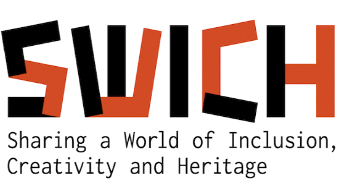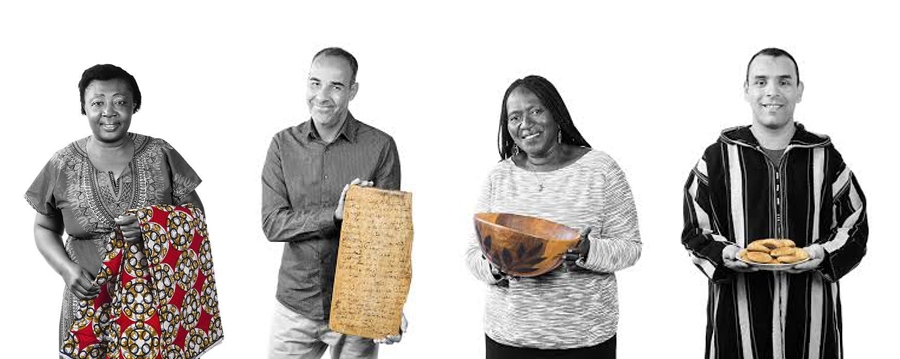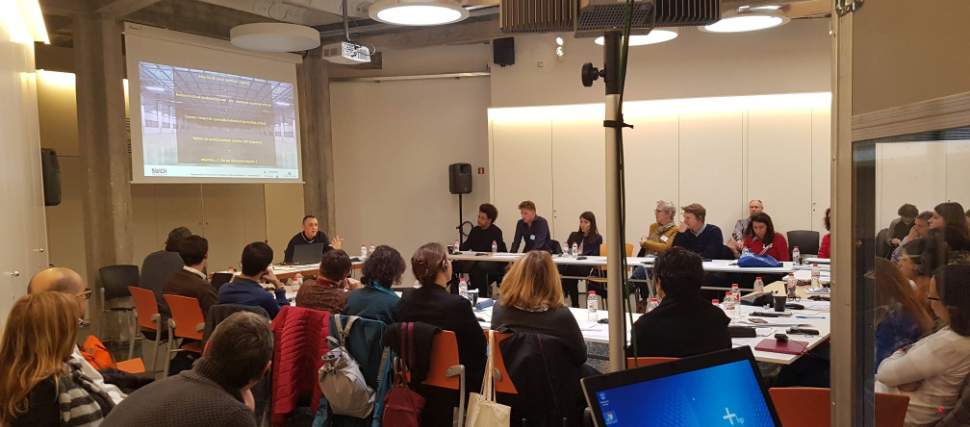Swich (2014- 2018)
Barcelona's Museu Etnològic i de les Cultures del Món is one of the eleven members of this network of ethnographic and world cultures museums SWICH. This European cross-border, cultural cooperation project began in 2014 and ended in 2018.
The SWICH network of museums (Sharing a World of Inclusion, Creativity and Heritage), is one of the projects to benefit from the Creative Europe subsidy programme for supporting the culture and visual arts sector.
The current SWICH network originated with the READ-ME, READ-ME II and RIME Europeana projects, a programme funded by Creative Europe that, from 2008 to 2013, promoted cultural cooperation between ethnographic and world cultures museums at a European level.


Members
Welmuseum Wien, Vienna, coordination
Rijksmuseum voor Volkenkunde, Leiden
The Royal Museum for Central Africa, Tervuren
Musée des Civilisations de l’Europe et de la Méditerranée, Marseilles
Statens museer för världskultur, Stockholm/Gothenburg
Linden-Museum, Stuttgart
OBJECTIVES, CONTEXT AND INITIATIVES
The aim of the SWICH project is to place ethnographic and world cultures museums at the heart of the debates on citizenship in modern-day Europe. Its debates concern concepts such as the reconfiguration of European demographics, a consequence of migratory waves and employment mobility.
Through a series of work programmes organised into six themes, the project aims to achieve the following objectives:
- To contribute to the development of new methodological tools so that museums in the network can approach these new realities.
- To promote the role and the visibility of ethnographic and world cultures museums as centres for creation, for cultural encounters, discursive innovation and the production of knowledge.
- To rethink the function of this kind of museum in order to turn them into tools for reflection on the history of museums and their collections.
The SWICH project concerns a series of key interrelated concepts: co-creativity, experimental exhibition, interrelation, cultural subjectivity, emotional citizenship, the diaspora of objects and people and new digital technologies as the creators of new forms of identity. All of this, through innovative and inclusive perspectives.
PROJECTS
The Museu Etnològic i de Cultures del Món developed two projects as a member of the European SWICH project: Dialogues with Africa and Do we still need objects?

DIALOGUES WITH AFRICA
This project is the result of a collaboration between the museum and the University of Barcelona's Department of Cultural Anthropology, and more specifically with the researchers Gemma Celigueta and Gabriel Izard. The exhibition “Dialogues with Africa” was the result of the workshops Dialogues and Connecting diasporas of objects and people, which took place in February and March 2016. The aim was to develop a dialogue between the museum and African residents in Catalonia. For the project, the museum invited a diverse group of collaborators to tell stories about their own objects, in dialogue with objects from the museum's collection.
Methodology
During February and March 2016, three focus groups were organised, corresponding to the three geographical and cultural areas of the African continent that have a significant presence in Catalonia: Morocco, West Africa and Central Africa. Each focus group included six guests chosen using the criteria of gender parity and ethnic diversity.
With the aim of stimulating the collective memory and personal memories of the participants, each guest was asked to bring one or two personal objects (clothing, personal or household ornaments, domestic tools, cooking ingredients, photographs, books or musical instruments.) which evoked their homelands. Similarly, the team of museum specialists chose some pieces from their collections that came from the above-mentioned geographical and cultural areas.
Related article:

DO WE STILL NEED OBJECTS?
In November 2017 the Museu Etnològic i de Cultures del Món hosted the workshop Do we still need objects? On 6 and 7 of November, various participants reflected on the importance of objects in contemporary museums, in which a whole series of intangible resources, such as the value of stories and memory, digital media and educational services, are becoming increasingly important.
Context
One of the main concerns for ethnographic and world cultures museums is reflecting on what should be collected, and how, in the present and the future. Today, museums are part of a society in which digitalisation is everywhere. Digital objects are becoming increasingly relevant in our society. In fact, in documentation and in heritage, a large part of the memory is already digital.
The rapid obsolescence of digital technologies and objects alerts us to the urgent need to find effective, consensual practices for collecting, documenting and preserving this type of heritage. Digiscape presented a context of constant creation and renovation of digital objects worldwide. In the face of this reality, what are the best practices for collecting and documenting digital heritage in ethnographic museums?
The museums have been using digital media for dissemination, communication and documentation for a long time. So, should they do the same with collecting? Is Digiscape replacing the collection of materials and the way of documenting them? Does it pave the way for “materialising” the intangible? Through their speeches —and subsequent debates—, the participating experts discussed and reflected on the impact of Digiscape on future museum collection processes, in order to generate shared objectives and fair and effective collection strategies.






